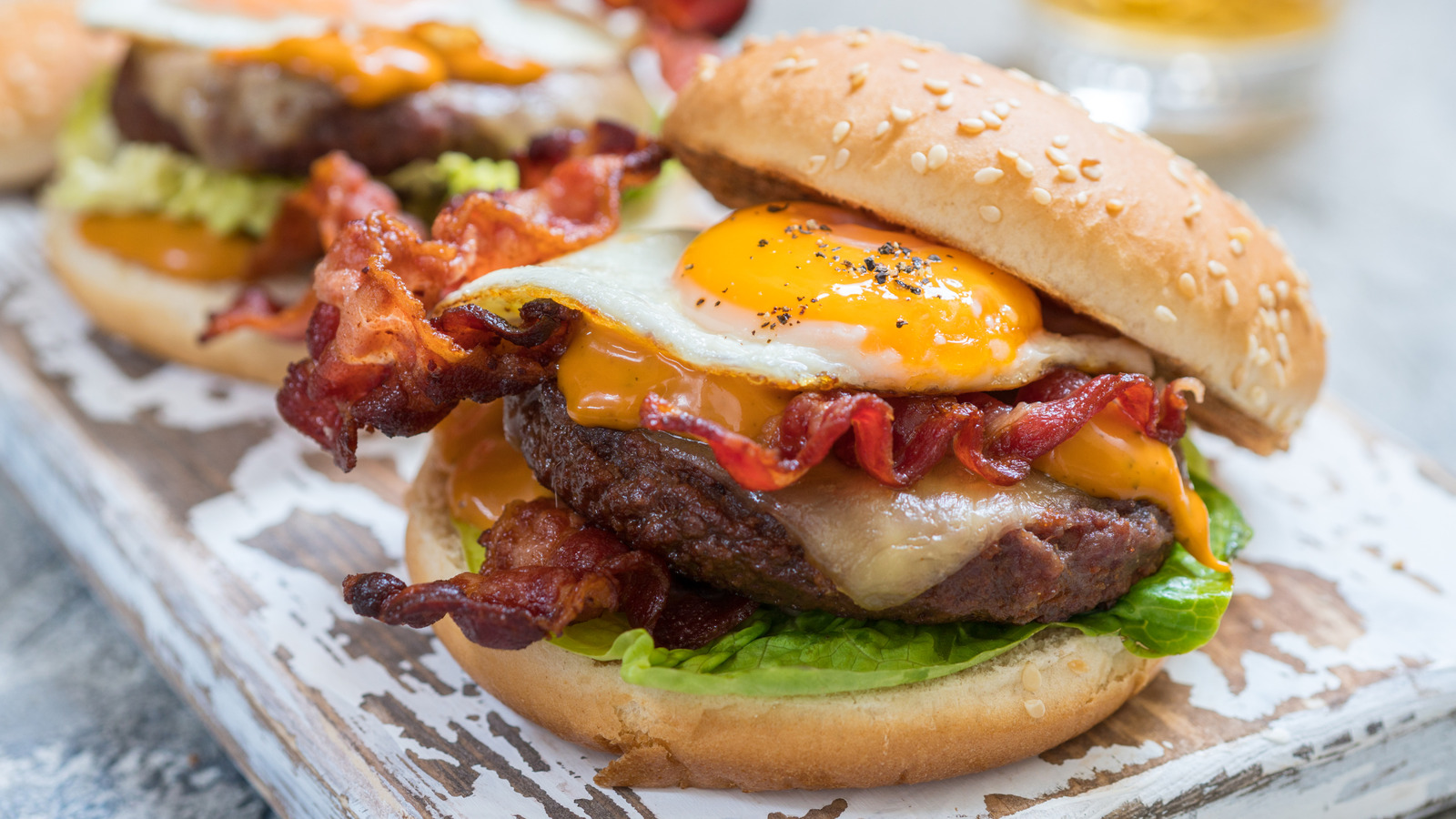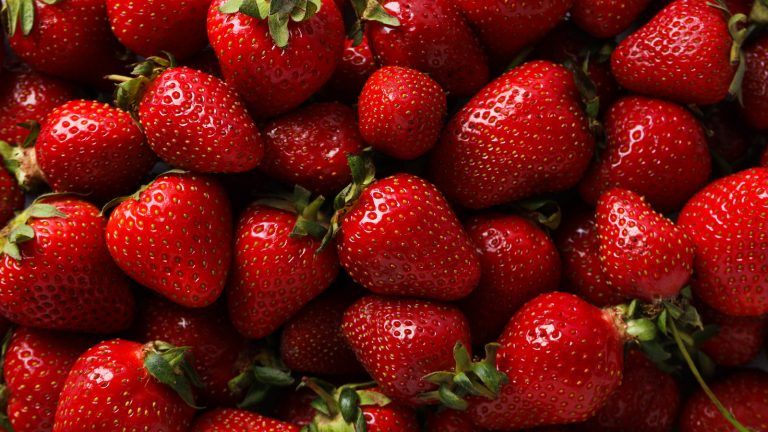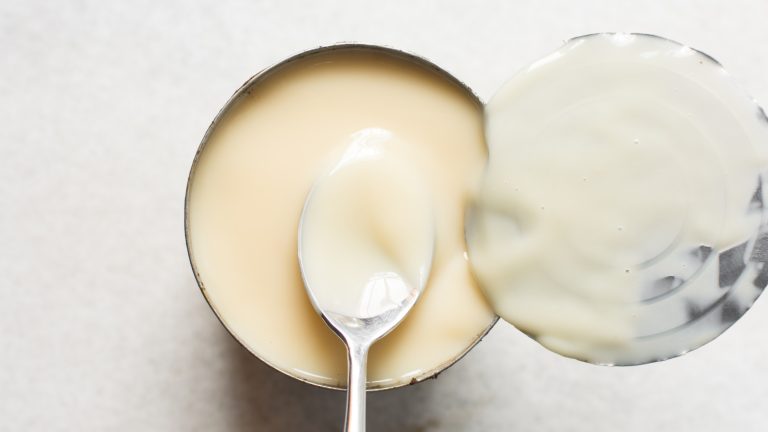Some burger fans are purists — even lettuce and tomato doesn’t belong in their ideal rendition. With some thoughtfulness, though, the ideal amount of burger toppings doesn’t have to be zero; each ingredient just needs to deliver a punch. And you’ll definitely be getting the best of a single addition when incorporating eggs.
It may seem like a simple upgrade, but the topping actually does a lot to shake up the burger template. So to help navigate this burger modifier, Chowhound has exclusive advice from Mike Puma. As owner of New York City’s Gotham Burger Social Club, he’s certainly well-versed in burger-egg combos, and quite a fan of this version of the dish.
After all, few burger ingredients bring a more satiating textural enhancement. Just a single egg adds quite a character to a burger, soaking the entire filling in its decadence. And the payoff is especially noticeable when you not only select the best type of eggs to top your burger but keep further preparation details in mind, too.
Add fried eggs to burgers for maximum textural appeal
There are many creative ways to enjoy eggs on a burger, from extra runny poached eggs on a breakfast burger to a rendition of the dish topped with egg salad. But if you’re looking for the most dependably delicious addition, turn to a fried egg. According to Mike Puma, ” … It offers a delightful textural contrast with its crispy edges and a satisfyingly runny yolk that coats the burger in richness.” The yolk is perhaps the fried egg’s most endearing quality, even when it’s intact. As Puma says, “[It] provides a burst of flavor and a luxurious mouthfeel with each bite.” And especially when cooked in oil, fried egg yolks are dense in fat, thereby offering an extra dose of unctuous flavor.
Not only does the consistency enhance the dish on a culinary level, it aesthetically improves the food, too. You won’t need to worry about a potential egg mess as you would with scrambled or poached eggs, as the whites’ solid consistency stays more or less intact. It also makes for a gorgeous foodie picture, with the clearly delineated yellow and white of a fried egg providing a visual accent against the brown meat or the orange of the cheese.
So combined with their umami tasting notes, fried eggs are an accessible, but wondrous way to upgrade a burger. Simply follow the tips to cook a perfect fried egg, and enjoy the best type of eggy topping for the sandwich.
Optimize your burger meat for the eggs
With the right cooking technique for your egg selected, next comes incorporating the ingredient in optimized fashion. Timing is everything. Make sure to cook the patties and toast the buns first before frying the eggs; room temperature eggs don’t hit the spot. And while you’re preparing the individual components — the beef, in particular — think about how their qualities will mesh with the eggs.
As Mike Puma says, you’ll be happiest with a burger cooked to the temperature that you love. That said, he does have a preference for a temp that plays best with a fried egg. ” … A nicely cooked medium-rare burger tends to pair most harmoniously with a runny yolk,” he says. Puma explains that the appeal of this combo is optimal juiciness, which you won’t find in either an overcooked burger patty or eggs over hard. In fact, he notes that this pairing ” … mirrors the culinary appeal of dishes like beef tartare served with an egg yolk, where the yolk adds a welcome richness and creaminess to the beef.”
However, if you prefer your burger patties well-done or in smash-burger style, don’t rule out the egg addition, either. Atop a crispier, less juicy piece of beef, the egg can add a nice dash of decadence, compensating for any lost moisture. And if you prepare burger patties rare alongside an egg, you’re basically serving the beef tartare in sandwich form. In such a scenario, you wouldn’t need many additional condiments; egg and beef do all the talking.
Consider using different egg types
With their widespread availability, it’s reasonable that chicken eggs are the go-to for burgers. Yet don’t neglect the delights of switching up the poultry product; different types of eggs elevate the dish in unique ways. For a more digestible chicken alternative, start with quail eggs.
Quail eggs are over three times as small as chicken eggs, yet offer a relatively similar palate. According to Mike Puma, sliders are a logical application for quail eggs’ dimensions, although he advocates placing them on full-sized burgers, too. He says, “A quail egg on a regular-sized burger offers a concentrated burst of its delicate, slightly gamey, and intensely rich yolk, adding a touch of unique elegance.”
For an even bolder modification, turn to the more dramatic flavor differences of a duck vs. chicken egg. This ingredient comes with amplified decadence by way of its grander size and substantially heftier yolk. Incorporate just one duck egg, and you’ll get twofold the gooey yolk runniness per bite — a positive for fans of eggs’ richness. With this in mind, however, Puma acknowledges that an entire duck egg could be too much for a regular-sized burger. Instead, he recommends scrambling one and using a portion of it in sliders to impart an elevated, creamy texture and rich flavor.
Further ingredient pairings make for a specific style of egg-topped burger
With such a wide canvas of egg types and preparations, tailor your burger’s other ingredients to fit the meal you’re aiming for: breakfast, dinner, and everything in between. Naturally, the inclusion of eggs suggests a breakfast or brunch context. To further such associations, you could serve your burger on a more breakfast-leaning bread like a bagel, topping it with a classic combo of breakfast sausage, melted cheese, and a mild lettuce. Mike Puma suggests swapping the classic bun for a toasted, buttered English muffin. He acknowledges bacon as a natural morning complement, although he notes a special fondness for Taylor Ham, a New Jersey breakfast meat staple.
Conversely, maybe you want to add eggs to your burger but prefer to shake off morning associations. In this case, try bringing in spicy elements like a chili crisp oil or warm seasonings, as Mike Puma suggests. Your veggies can change the vibe, too. Puma says, ” … A swap of milder lettuces like iceberg or romaine for a more peppery option such as arugula can also contribute to a less breakfast-like experience.”
There are other ways to integrate heat and lend a more dinnertime note to the burger. Perhaps try making a ground chorizo spicy burger, layering jalapeños atop it, or adding a smear of Sriracha mayo, all of which complement a fried egg. So in short, note complementary flavors, and enjoy an egg burger in numerous contexts.





